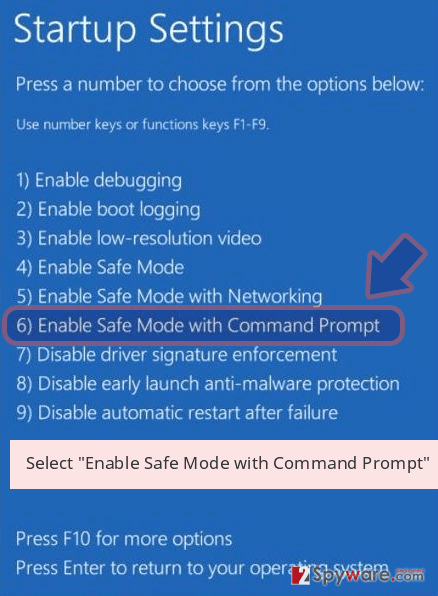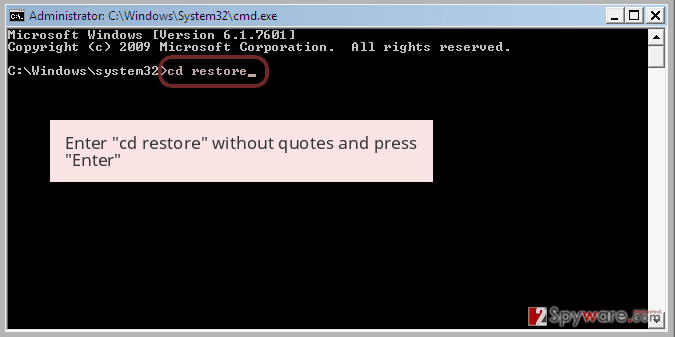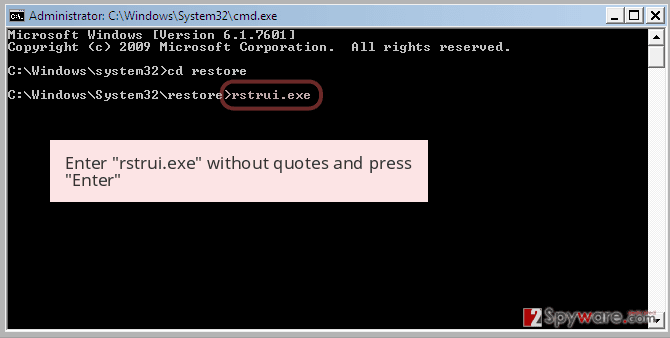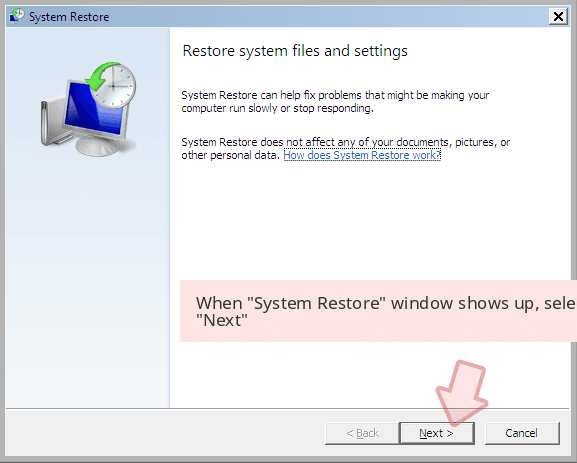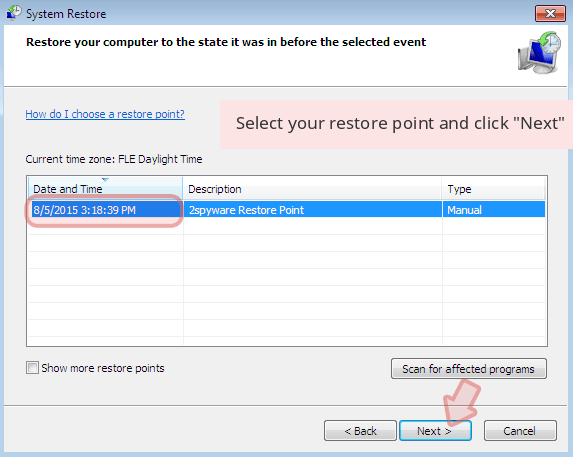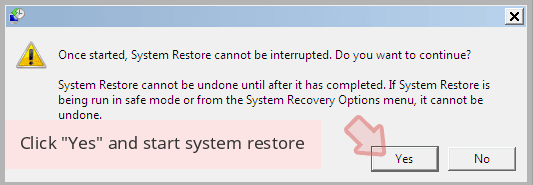Ordinal ransomware / virus (Free Instructions) - Free Instructions
Ordinal virus Removal Guide
What is Ordinal ransomware virus?
Ordinal ransomware scares users with military-grade encryption
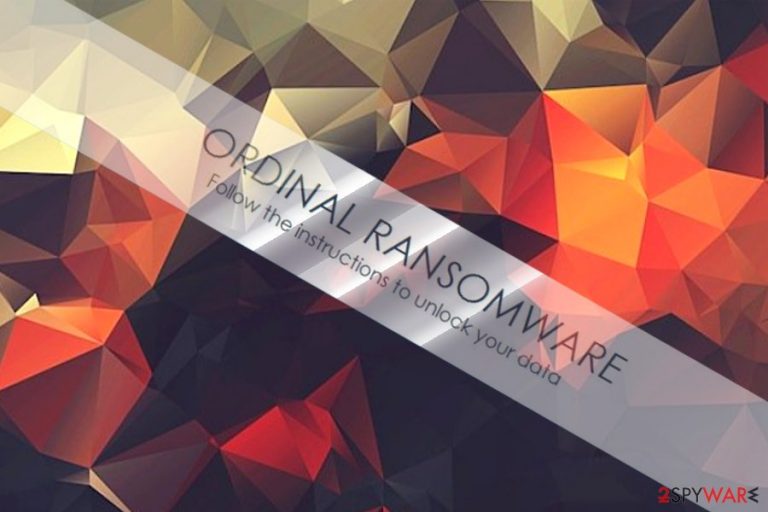
The ordinal virus is the name of a new HiddenTear-based crypto-virus. At the moment, it is identified by multiple security applications as Generic.Ransom.Hiddentear.A.F8C468CD, MSIL.Trojan-Ransom.Cryptear.Z, Ransom:MSIL/Ryzerlo.A. Currently, it appends .original file extension. It disguises under main.exe file, though the name of the executable may vary.
The malware does not exhibit any peculiar operation qualities. On another hand, it downloads a specific wallpaper from https://i.imgur.com[1]. The crypto-malware presents its basic GUI and READ Me To Get Your Files Back.txt which suggests following the instructions to unlock the data.
The infection alarms victims that their files have been encoded with AES-256 military-grade encryption. It asks to transfer 1 BTC to the indicated bitcoin address. In case victims run into technical difficulties, they can contact the perpetrators via TEST@protonmail.com. The ransom note alerts victims to transfer data within 7 days.
After the payment, Ordinal malware victims should supposedly get the decryption program and the key. If you haven’t backed up[2] your files in advance, you might consider paying the ransomware. There are very few chances that the perpetrators will play fairly and transfer unaffected or all files. It would be wiser to concentrate on Ordinal removal. FortectIntego or Malwarebytes will help you get rid of the virus faster. Only when the virus is fully eradicated, proceed to data recovery instructions.
Ransomware promotion tips
Crypto-viruses are likely to be spread via these channels:
- spam emails
- trojans
- corrupted extensions and apps
Concerning the first distribution method, there have been no spotted emails delivering Ordinal ransomware. On the other hand, such possibility should not be overlooked. Especially be wary of emails which carry supposedly very important invoices or other attachments.
Beware of Ordinal hijack when downloading content from hardly secure domains. Recently, browser extensions have become a preferred tool among crypto-coin miner[3] developers, but malware creators as well. Now let us proceed to the last section which discusses the best options to remove Ordinal virus. 
Eliminate computer threats
You might need to boot the system in Safe Mode to fully remove Ordinal virus. You might as perform the scan in the normal mode as well if the virus does not shut down the program. After you complete Ordinal removal, proceed to data recovery. You will find a few suggestions below. Though the ransomware note is written in English, residents of Spain[4] should be careful as well.
Getting rid of Ordinal virus. Follow these steps
Manual removal using Safe Mode
Important! →
Manual removal guide might be too complicated for regular computer users. It requires advanced IT knowledge to be performed correctly (if vital system files are removed or damaged, it might result in full Windows compromise), and it also might take hours to complete. Therefore, we highly advise using the automatic method provided above instead.
Step 1. Access Safe Mode with Networking
Manual malware removal should be best performed in the Safe Mode environment.
Windows 7 / Vista / XP
- Click Start > Shutdown > Restart > OK.
- When your computer becomes active, start pressing F8 button (if that does not work, try F2, F12, Del, etc. – it all depends on your motherboard model) multiple times until you see the Advanced Boot Options window.
- Select Safe Mode with Networking from the list.
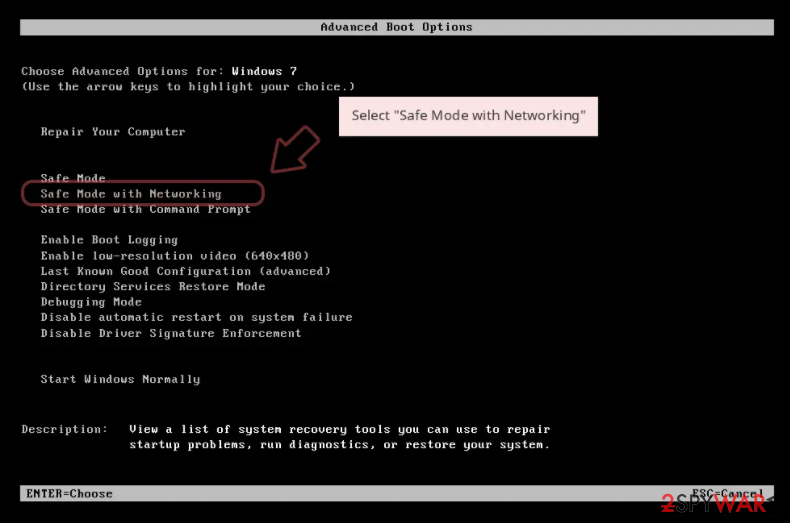
Windows 10 / Windows 8
- Right-click on Start button and select Settings.
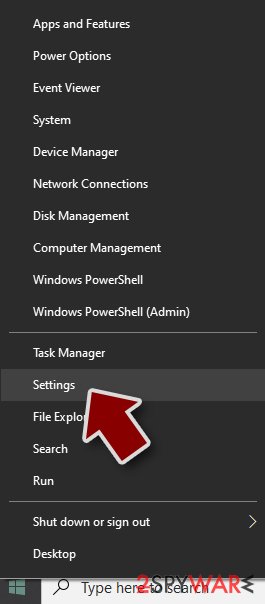
- Scroll down to pick Update & Security.
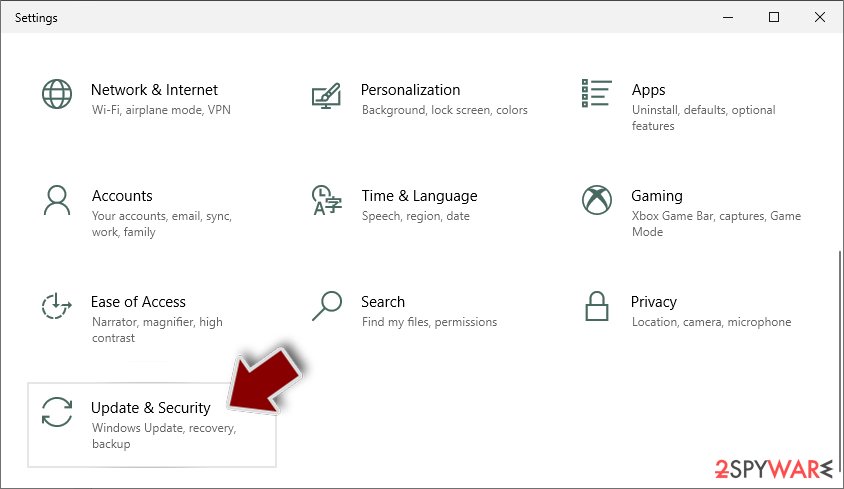
- On the left side of the window, pick Recovery.
- Now scroll down to find Advanced Startup section.
- Click Restart now.
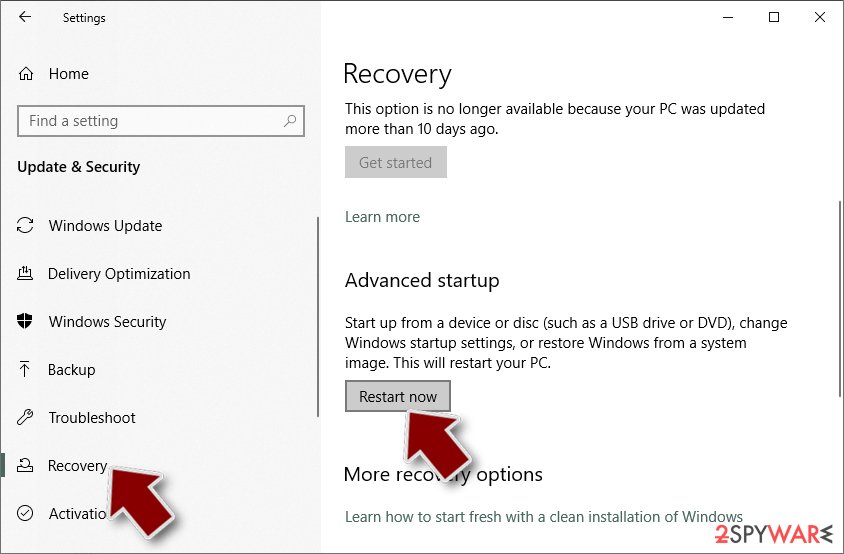
- Select Troubleshoot.
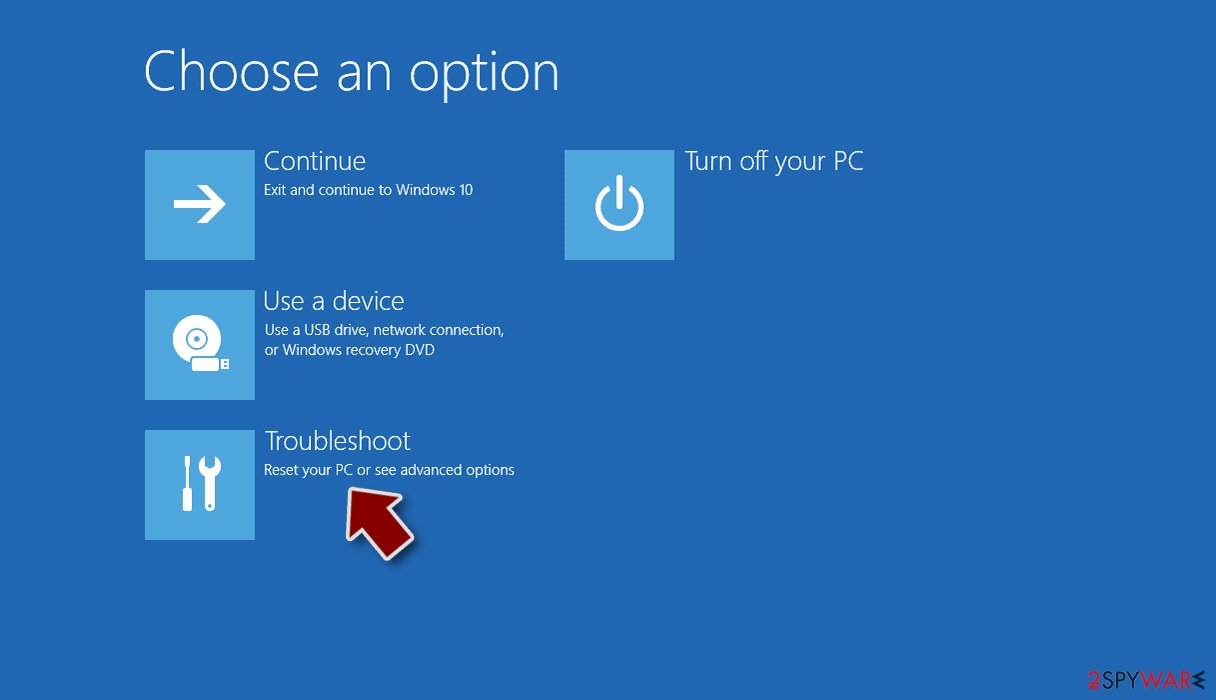
- Go to Advanced options.
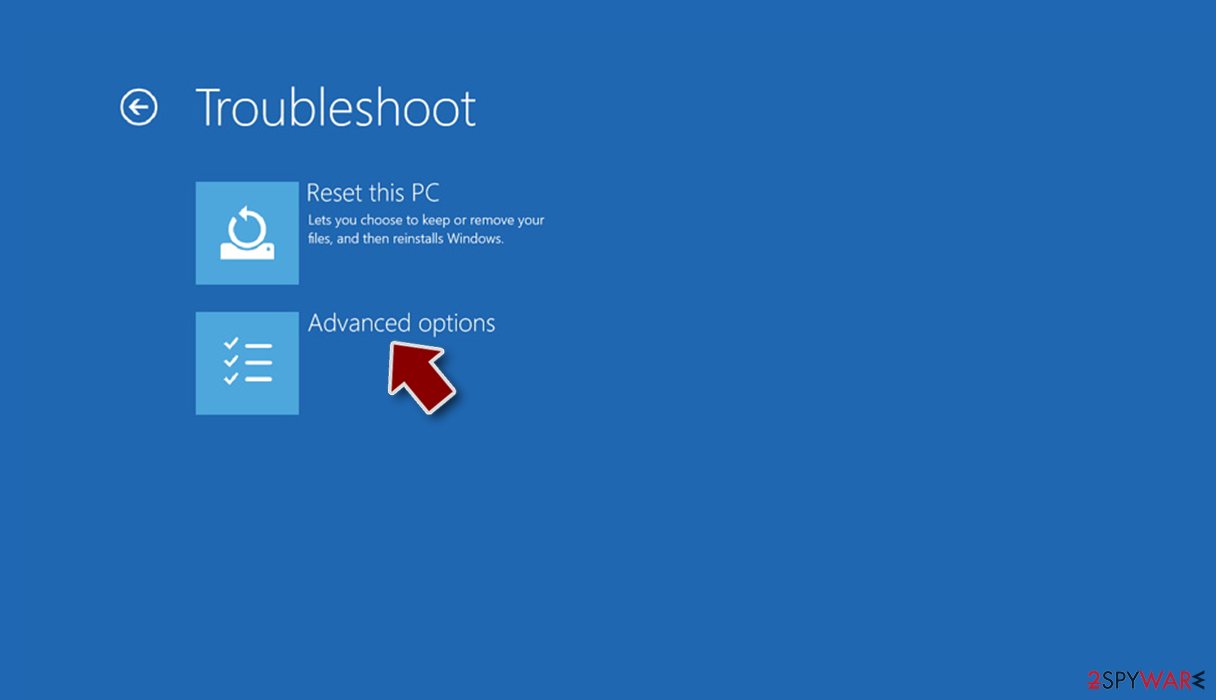
- Select Startup Settings.
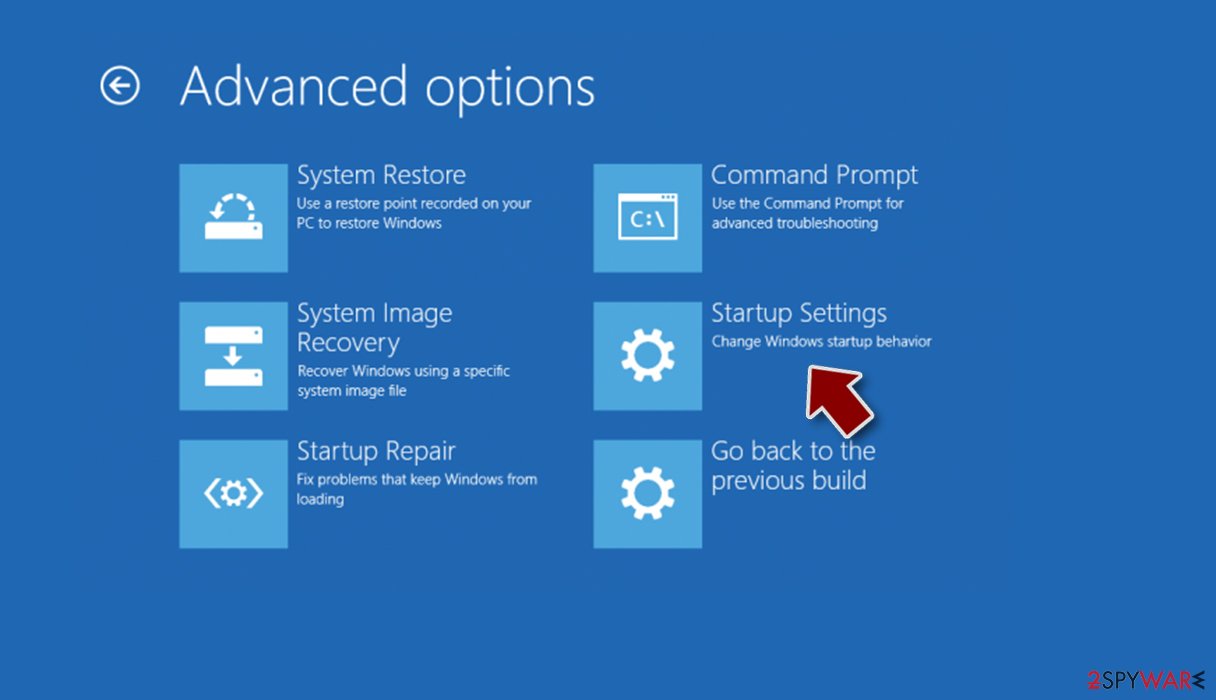
- Press Restart.
- Now press 5 or click 5) Enable Safe Mode with Networking.
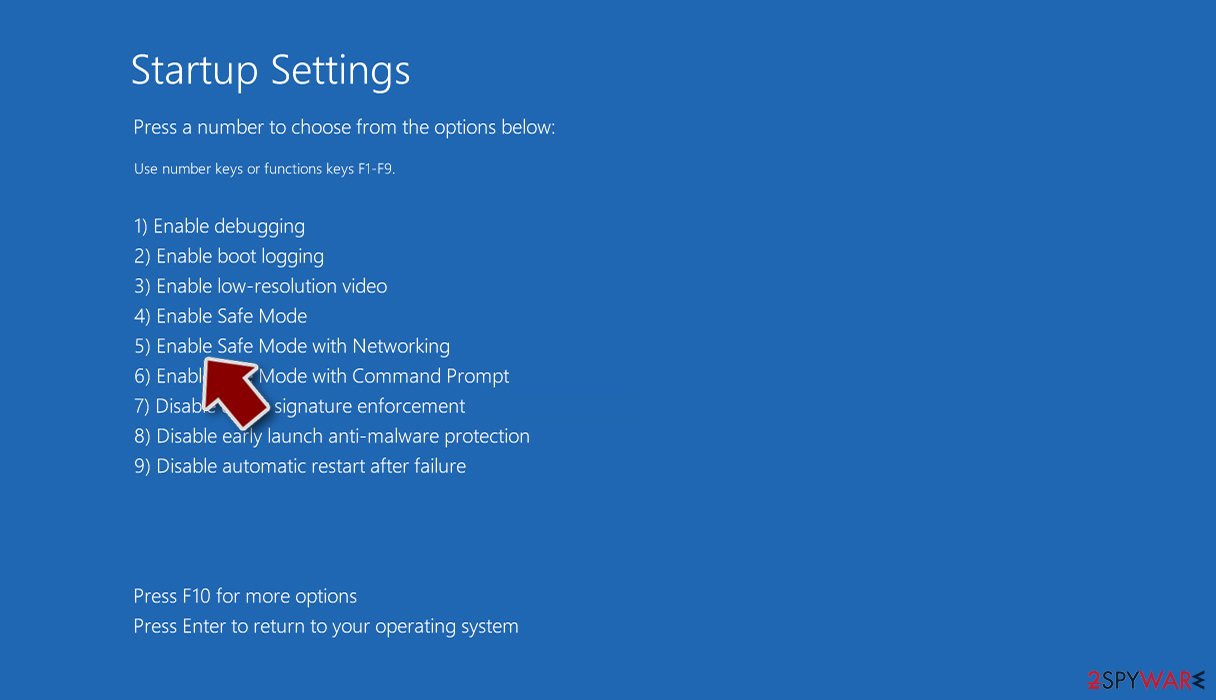
Step 2. Shut down suspicious processes
Windows Task Manager is a useful tool that shows all the processes running in the background. If malware is running a process, you need to shut it down:
- Press Ctrl + Shift + Esc on your keyboard to open Windows Task Manager.
- Click on More details.
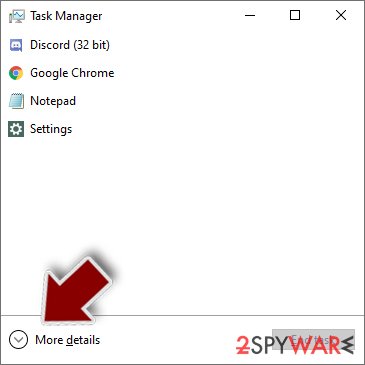
- Scroll down to Background processes section, and look for anything suspicious.
- Right-click and select Open file location.
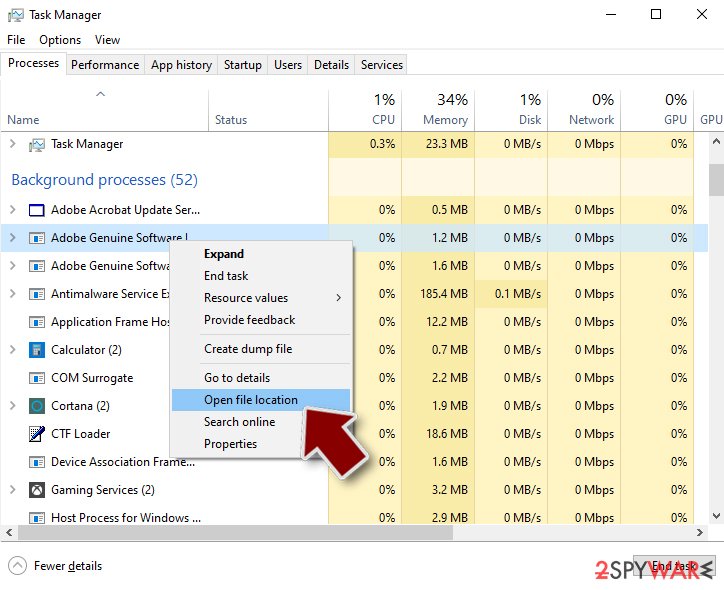
- Go back to the process, right-click and pick End Task.
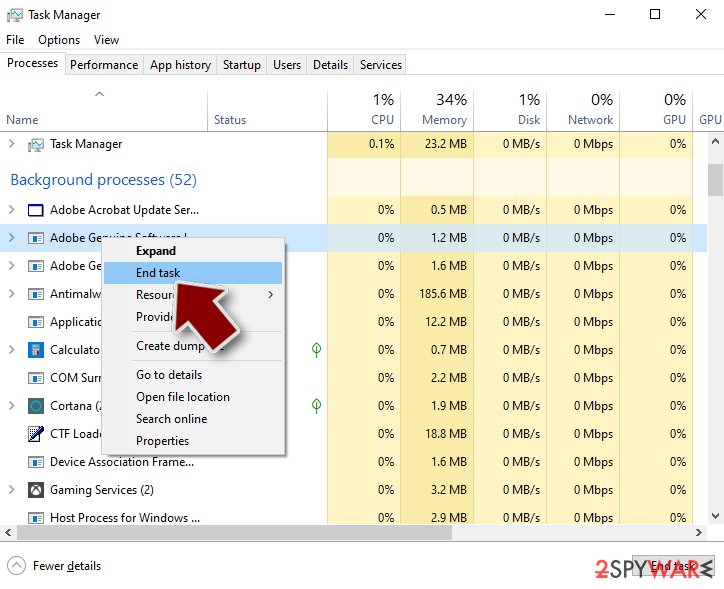
- Delete the contents of the malicious folder.
Step 3. Check program Startup
- Press Ctrl + Shift + Esc on your keyboard to open Windows Task Manager.
- Go to Startup tab.
- Right-click on the suspicious program and pick Disable.
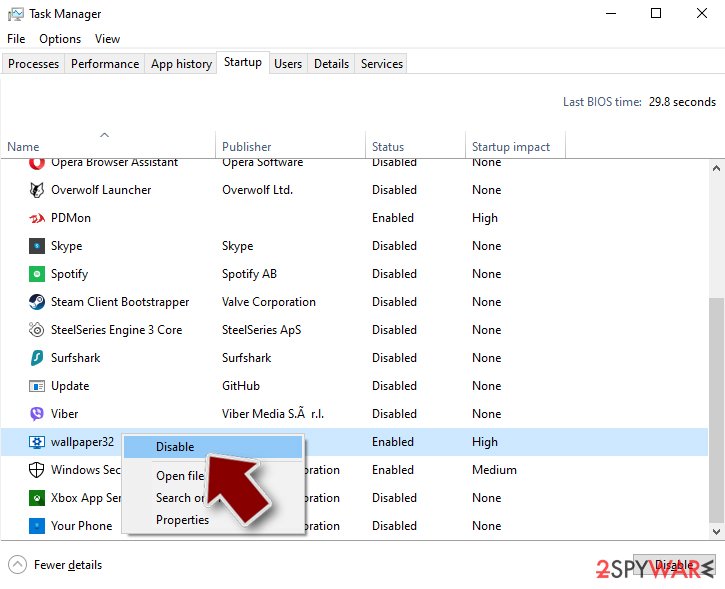
Step 4. Delete virus files
Malware-related files can be found in various places within your computer. Here are instructions that could help you find them:
- Type in Disk Cleanup in Windows search and press Enter.
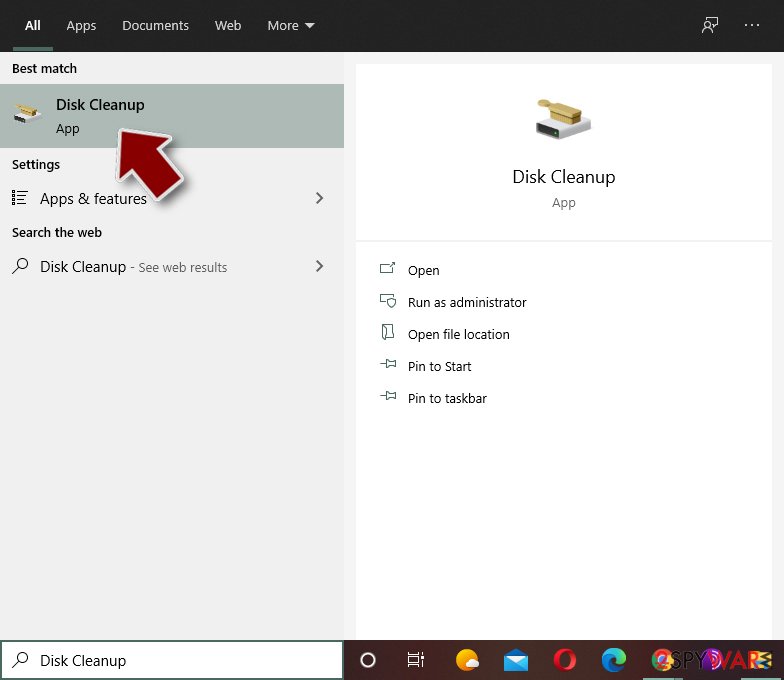
- Select the drive you want to clean (C: is your main drive by default and is likely to be the one that has malicious files in).
- Scroll through the Files to delete list and select the following:
Temporary Internet Files
Downloads
Recycle Bin
Temporary files - Pick Clean up system files.
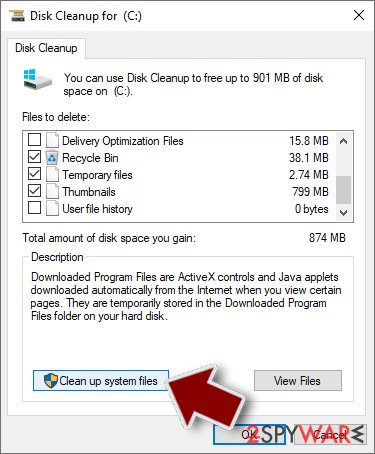
- You can also look for other malicious files hidden in the following folders (type these entries in Windows Search and press Enter):
%AppData%
%LocalAppData%
%ProgramData%
%WinDir%
After you are finished, reboot the PC in normal mode.
Remove Ordinal using System Restore
In case the first method did not grant you the access to the security tool, perform System Recovery. /GI]
[GI=data-recovery]
-
Step 1: Reboot your computer to Safe Mode with Command Prompt
Windows 7 / Vista / XP- Click Start → Shutdown → Restart → OK.
- When your computer becomes active, start pressing F8 multiple times until you see the Advanced Boot Options window.
-
Select Command Prompt from the list

Windows 10 / Windows 8- Press the Power button at the Windows login screen. Now press and hold Shift, which is on your keyboard, and click Restart..
- Now select Troubleshoot → Advanced options → Startup Settings and finally press Restart.
-
Once your computer becomes active, select Enable Safe Mode with Command Prompt in Startup Settings window.

-
Step 2: Restore your system files and settings
-
Once the Command Prompt window shows up, enter cd restore and click Enter.

-
Now type rstrui.exe and press Enter again..

-
When a new window shows up, click Next and select your restore point that is prior the infiltration of Ordinal. After doing that, click Next.


-
Now click Yes to start system restore.

-
Once the Command Prompt window shows up, enter cd restore and click Enter.
Finally, you should always think about the protection of crypto-ransomwares. In order to protect your computer from Ordinal and other ransomwares, use a reputable anti-spyware, such as FortectIntego, SpyHunter 5Combo Cleaner or Malwarebytes
How to prevent from getting ransomware
Protect your privacy – employ a VPN
There are several ways how to make your online time more private – you can access an incognito tab. However, there is no secret that even in this mode, you are tracked for advertising purposes. There is a way to add an extra layer of protection and create a completely anonymous web browsing practice with the help of Private Internet Access VPN. This software reroutes traffic through different servers, thus leaving your IP address and geolocation in disguise. Besides, it is based on a strict no-log policy, meaning that no data will be recorded, leaked, and available for both first and third parties. The combination of a secure web browser and Private Internet Access VPN will let you browse the Internet without a feeling of being spied or targeted by criminals.
No backups? No problem. Use a data recovery tool
If you wonder how data loss can occur, you should not look any further for answers – human errors, malware attacks, hardware failures, power cuts, natural disasters, or even simple negligence. In some cases, lost files are extremely important, and many straight out panic when such an unfortunate course of events happen. Due to this, you should always ensure that you prepare proper data backups on a regular basis.
If you were caught by surprise and did not have any backups to restore your files from, not everything is lost. Data Recovery Pro is one of the leading file recovery solutions you can find on the market – it is likely to restore even lost emails or data located on an external device.
- ^ Lawrence Abrams. Ordinal Ransomware. HiddenTear . Will append .Ordinal and drops note READ Me To Get Your Files Back.txt.Ordinal.. BleepingComputer. News, reviews and tech support.
- ^ Linas Kiguolis. The Importance of Plan B: Why Data Backups are Necessary. Tecoreviews. The Ultimate Destination for News and Reviews.
- ^ Iain Thomson. Another day, another cryptocurrency miner lurking in a Google Chrome extension. TheRegister. Biting the hand that feeds IT.
- ^ Eliminate computer threats. Losvirus. Security news in Spanish.

